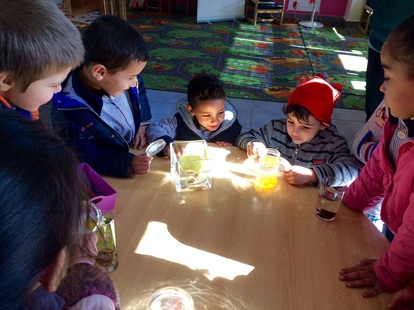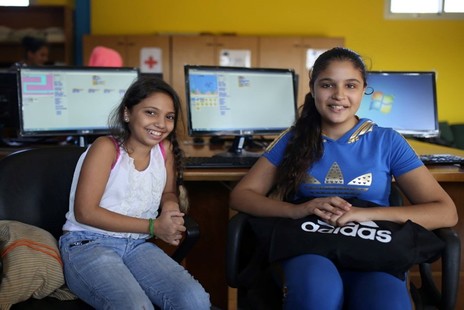Target Beneficiaries
Palestinian Refugees
There are approximately 495,000 registered Palestinian refugees living within Lebanon, of these, around 53% are living in one of twelve recognized refugee camps. Palestinian refugees living in Lebanon are not afforded the same rights as many other foreigners who are living and working in the country. Though there are services available for Palestinian refugees through UNRWA, a United Nations agency, the conditions in the camps are poor, with overcrowding, poverty, unemployment, poor housing conditions and a lack of infrastructure.
While some obtain access to public or private Lebanese schooling, most Palestinian students are enrolled UNRWA schools (a total of 69). The latest numbers show that out of 112,724 school aged children (3 to 18), only 36,549 are enrolled in UNRWA schools, amounting to an alarming 32% enrollment rate.
Syrian Refugees
Current estimates suggest there are at least 1.1 million Syrian refugees living in Lebanon, amounting to over one quarter of the country's population. Lebanon currently hosts the world’s highest concentration of refugees compared to its total population. While some live in urban dwellings, the majority live in some of the poorest areas in the country, often in informal tented settlements, lacking access to clean water and basic services.
It is estimated that 400,000 of these refugees are school aged children, with only about 20% enrolled in formal education. Many public and UNRWA schools are double-shifting to allow for Syrian children to attend school; however, the schools are facing severe over crowding which is contributing to a higher dropout rate. Additionally, Lebanese schools are taught in English or French, while the Syrian curriculum is taught in Arabic, making it more difficult for them to succeed.
Lebanese Citizens
Around 25% of the Lebanese population lives under the national poverty line of $4 a day. Most of the poor work in the informal sector and face insecure work prospects, have low levels of education, live in poor quality and overcrowded houses, have poor eating habits and suffer from malnutrition. Despite contradicting and poor quality statistics, unemployment estimates in Lebanon range from 10% to 23%, with unemployment highest among youth and women.
The gross enrollment rate for primary education is 97.1%, with 78.1% of the students completing their education. The gross enrollment rate for secondary education in Lebanon is 68.2%. Children from underprivileged families often attend public schools and free private schools and face a lower quality of education which reduces their chances of attaining secondary or university education.
There are approximately 495,000 registered Palestinian refugees living within Lebanon, of these, around 53% are living in one of twelve recognized refugee camps. Palestinian refugees living in Lebanon are not afforded the same rights as many other foreigners who are living and working in the country. Though there are services available for Palestinian refugees through UNRWA, a United Nations agency, the conditions in the camps are poor, with overcrowding, poverty, unemployment, poor housing conditions and a lack of infrastructure.
While some obtain access to public or private Lebanese schooling, most Palestinian students are enrolled UNRWA schools (a total of 69). The latest numbers show that out of 112,724 school aged children (3 to 18), only 36,549 are enrolled in UNRWA schools, amounting to an alarming 32% enrollment rate.
Syrian Refugees
Current estimates suggest there are at least 1.1 million Syrian refugees living in Lebanon, amounting to over one quarter of the country's population. Lebanon currently hosts the world’s highest concentration of refugees compared to its total population. While some live in urban dwellings, the majority live in some of the poorest areas in the country, often in informal tented settlements, lacking access to clean water and basic services.
It is estimated that 400,000 of these refugees are school aged children, with only about 20% enrolled in formal education. Many public and UNRWA schools are double-shifting to allow for Syrian children to attend school; however, the schools are facing severe over crowding which is contributing to a higher dropout rate. Additionally, Lebanese schools are taught in English or French, while the Syrian curriculum is taught in Arabic, making it more difficult for them to succeed.
Lebanese Citizens
Around 25% of the Lebanese population lives under the national poverty line of $4 a day. Most of the poor work in the informal sector and face insecure work prospects, have low levels of education, live in poor quality and overcrowded houses, have poor eating habits and suffer from malnutrition. Despite contradicting and poor quality statistics, unemployment estimates in Lebanon range from 10% to 23%, with unemployment highest among youth and women.
The gross enrollment rate for primary education is 97.1%, with 78.1% of the students completing their education. The gross enrollment rate for secondary education in Lebanon is 68.2%. Children from underprivileged families often attend public schools and free private schools and face a lower quality of education which reduces their chances of attaining secondary or university education.



